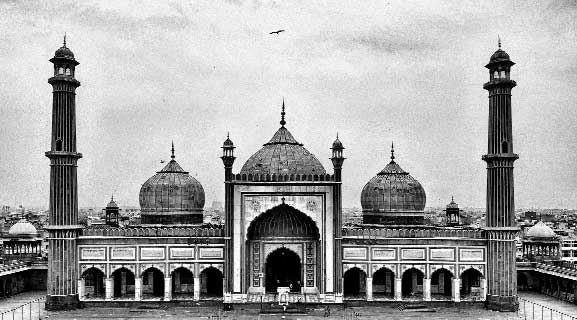While writing a book on the East India Company, WILLIAM DALRYMPLE shot historical milestones and monuments on his cellphone, the striking black and white images conveying the immediacy and lack of pretension. By Uma Nair
William Dalrymple’s trail of his new book — the journey of the East India Company as it steadily laid claim to the Indian subcontinent — brought him up, close to all historical strongholds of major dynasties of the day. So he chose to photograph them on his Samsung Edge. Forty of the striking black and white images feature in the exhibition, The Historian’s Eye, at Vadehra Contemporary studio. They convey the immediacy and lack of pretension that a cellphone offers in recording the world around us. For trigger-happy cellphone photographers all over the world, Dalrymple has said: “Photography should always be about the eye, not the equipment.”
The grainy, haunting images depict places in Delhi as well as the East India Company’s headquarters in Calcutta, the capital of the nawabs of Bengal in Murshidabad, Tipu Sultan’s base of Srirangapatnam and a few places in Pakistan.
Dalrymple’s book is about small and larger truths, about exploitation and diatribes but his photographs at Vadehra are the stuff of nostalgia. In his photo book, published by Harper Collins, he writes, “I have travelled from the Red Fort and Jama Masjid of Delhi to the Company’s headquarters in Calcutta,” “...from the capital of the nawabs of Bengal in Murshidabad to as far south as Tipu Sultan’s base of Srirangapatnam, a fortified island in the Cauvery river between Mysore and Bangalore.”
The political dynamics at the time were tense, rife with family feuds and exiled rulers, Marathas and Mughals in a state of constant conflict, and all the while the shadow of the Company looming steadily larger.
His travels to various historical sites become his subject. “I certainly find that when I’m writing, my view of an event is almost always completely changed by visiting the site,” he explains. “Obviously, everything has changed in 250 years and what you see when you go somewhere today is not what Shah Alam saw in the early 1800s. For example, the Red Fort today is completely different; nonetheless, if you’ve never been to the Red Fort, you can’t possibly imagine what his life had been like.”
The blacks and whites have about them a surreal stillness. While each image has something to ponder, it is the Delhi series that grabs you by the eyeballs because it is steeped in the beauty of solitude. Jama Masjid is a panoramic flat linear image that distills the tide of time. Jantar Mantar has its geometric gravitas while Rajon ki baoli, Mehrauli, has an aura of antiquity. Among narratives that capture evocative experiences is Monsoon afternoon at Safdarjung Tomb.
Dalrymple surfaces as a concerned historian and photographer. While he photographs all these places, we can sense a certain brand of sensitivity. “The Mughal empire, which had been one super-centralised, hyper-organised empire, suddenly fragmented overnight — like a mirror dropped from a first-floor window,” said Dalrymple about his work in an exclusive interview.
His images give an hour-glass definition to an area of photography that has a specific point of view. These images talk to us through the tapestry of faith and the veil of history. It unravels Dalrymple as a photographer who is also a committed humanist. Unlike a number of run-of-the-mill photojournalists as well as mundane, pedestrian documentary photographers, Dalrymple comes through as an observer who is far from neutral. Rather he comes through as a passionate historian who has a human pulse and a viewpoint about exploitation, atrocities and colonial hangovers. He is a champion of the narrative with an eye on integrity.
In more ways than one, you remember the words of the last Mughal, Bahadur Shah Zafar, just before his death: “Delhi was once a paradise/ Where Love held sway and reigned/ But its charm lies ravished now/ And only ruins remain.”


























